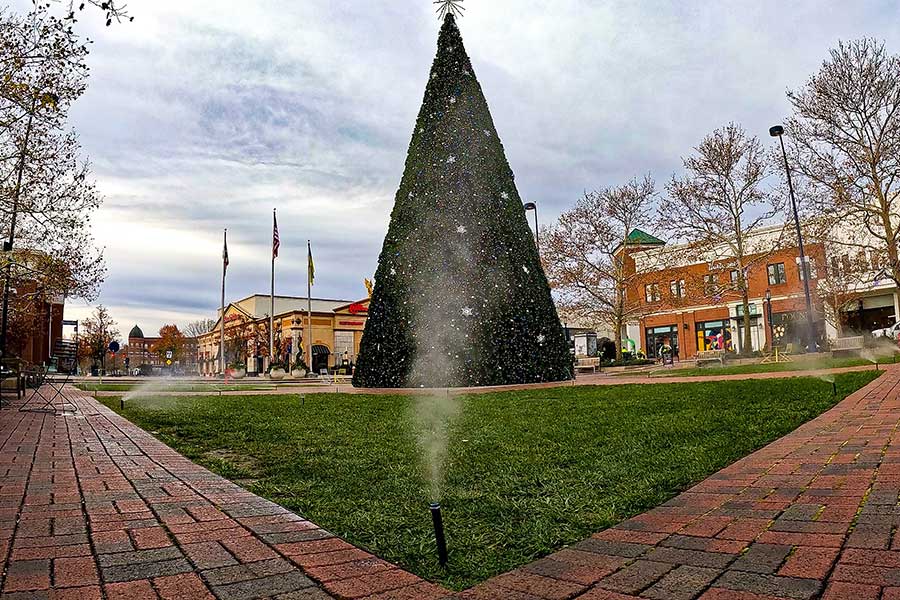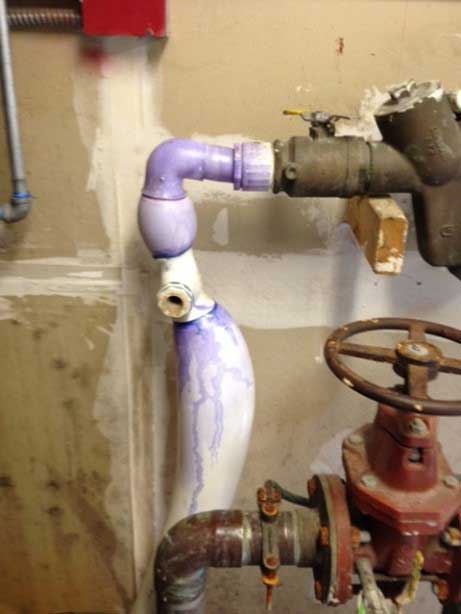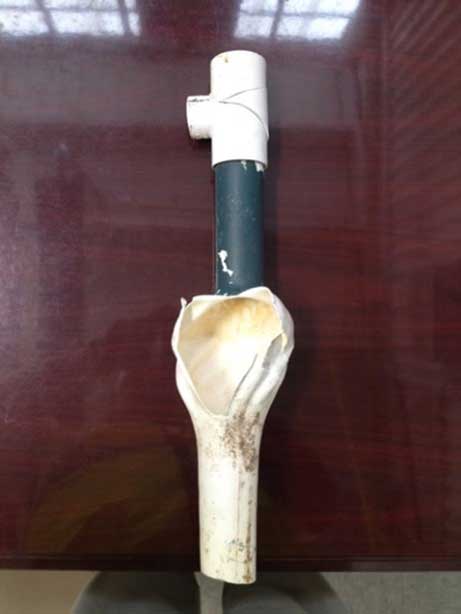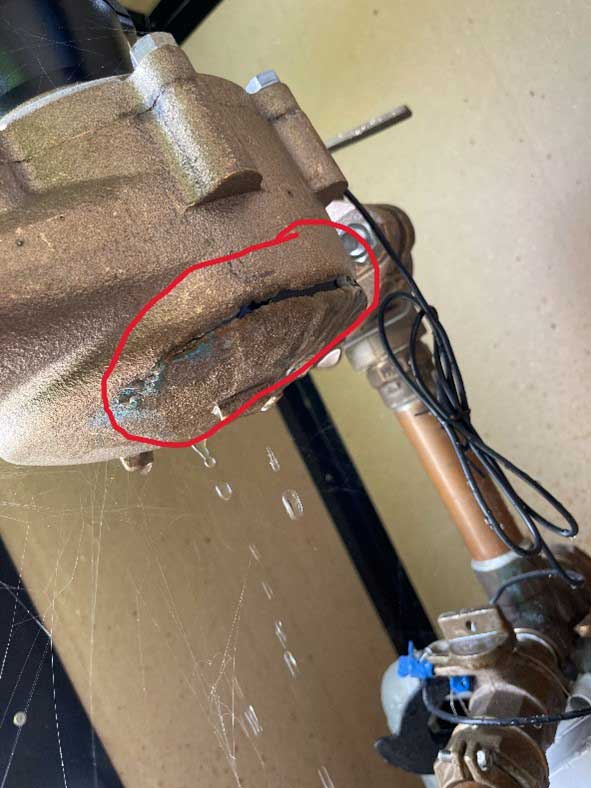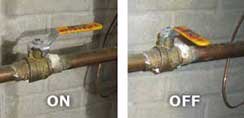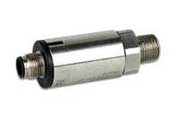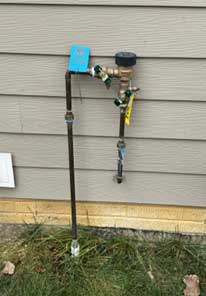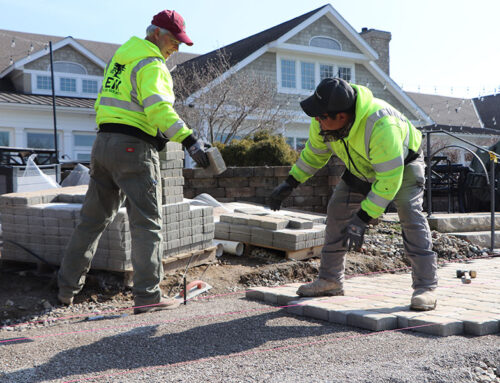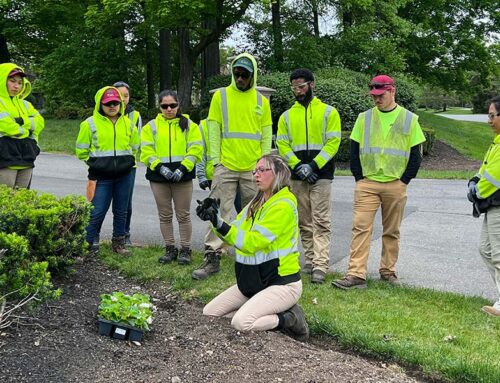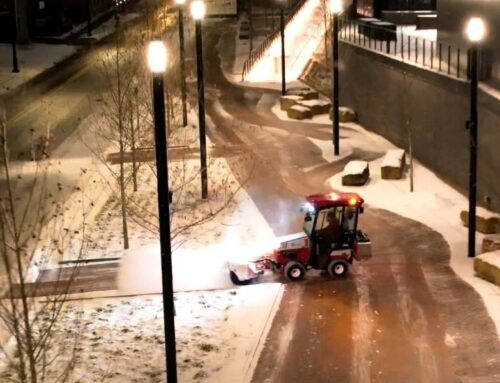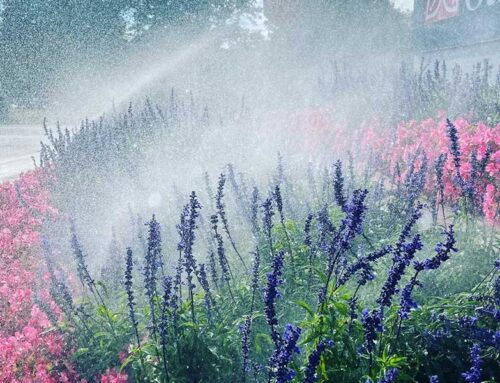Figure 1 Winterization at Easton Town Center
As we approach the conclusion of our irrigation winterization operations of 2023, it’s crucial to emphasize the potential consequences of inadequately winterized irrigation system. When an irrigation system isn’t winterized properly, it sets the stage for a host of problems that can wreak havoc on the system’s functionality and longevity. Let’s delve into the possible repercussions of neglecting this vital process and underscore the importance of entrusting winterization to an expert team.
- Figure 2 Irrigation mainline was heated up due to the friction of air flow and ballooned the PVC pipe.
- Figure 2 irrigation mainline pipe was heated up due to the friction of air flow and exploded.
Improper winterization can lead to a domino effect of issues that compromise the integrity of your irrigation system. From frozen pipes and damaged valves to malfunctioning pumps, the repercussions can be both costly and time-consuming to rectify. Without proper shutdown procedures, water left in the system can freeze, expanding and causing pipes to burst. Valves may seize up, rendering them inoperable when the system is brought back online in the spring. Pumps, especially those with sensitive components like the VFD Transducer, are susceptible to damage from freezing temperatures.
Given the complexity of these potential problems, it becomes evident a winterized irrigation system is not a task to be taken lightly. It requires a meticulous approach and the expertise of a seasoned team to ensure each component is safeguarded against the harsh winter conditions. Trusting the winterization process to professionals, like our team at EMI, is an investment in the longevity and reliability of your irrigation system. Our experienced technicians understand the intricacies of the process and take the necessary steps to mitigate risks, providing you with peace of mind throughout the winter months. Don’t underestimate the impact of proper winterization — it’s the key to avoiding a cascade of issues that could disrupt your system’s performance and incur unnecessary expenses.
Here’s a simple guide for our valued customers to double-check a few key items before it’s too late.
-
Water Shut-Off: The First Line of Defense
- Exterior Backflow:
Ensure the water is shut off at the main valve inside the building or at the curb stop key below the frost line. - Pump Station:
- Remove and store the VFD Transducer in a warm location to prevent freezing.
- Pull the pump start relay wire from the controller to avoid accidental pump activation.
-
Backflow Considerations: The Critical Positions
- Ball Valve Positions:
- For both indoor and outdoor backflows, consider the position of ball valves.
- The main shut-off valve should be in a warm location to prevent freezing.
- If left fully closed, water can be trapped inside the ball; if fully open, water can be trapped between the ball and the body of the backflow.
- This precaution protects the system in case of a heater failure or accidental valve opening.
- Ball Valve Positions:
-

Figure7 The nut on the bottom of the pump should be pulled to allow water to be drained from the pump housing.
Pump Stations: Draining Safely
- Drain Ports:
- Ensure all drain ports are opened and left loose, even if the pump station is in a heated space.
- This allows water to escape if the pump station is exposed to freezing temperatures.
- Drain Ports:
- Winterization Connection: Safety First
- Quick Coupler Valve:
- Install a quick coupler valve in the ground on the irrigation mainline for a safe winterization process.
- The ground acts as a natural insulator, preventing overheating of the compressor air.
- Offers thrust block protection as soil compacts around fittings.
- Avoid PVC Fittings:
- We strongly recommend against winterizing through PVC fittings, as they can weaken and lead to pipe failure.
- Quick Coupler Valve:
-
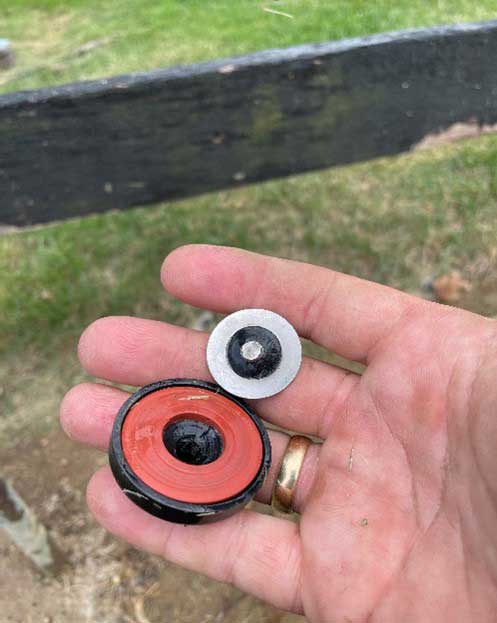
Figure 8 A broken check valve from a backflow that had air blow through the backflow during winterizationt
Caution with Backflows:
- Avoid winterizing through backflows, as they can restrict the volume of air introduced into the system.
- Winterizing through test ports may damage gaskets/seals, leading to leaks and inspection failures in the spring.
In summary, winterizing your irrigation system is a simple yet essential task. By following these guidelines, you can protect your system from potential damage, ensuring a smooth start in the spring. Remember, a little care now goes a long way in preserving the health and efficiency of your irrigation setup. If you have any questions or concerns, feel free to reach out to our team at EMI. Happy winterizing!

